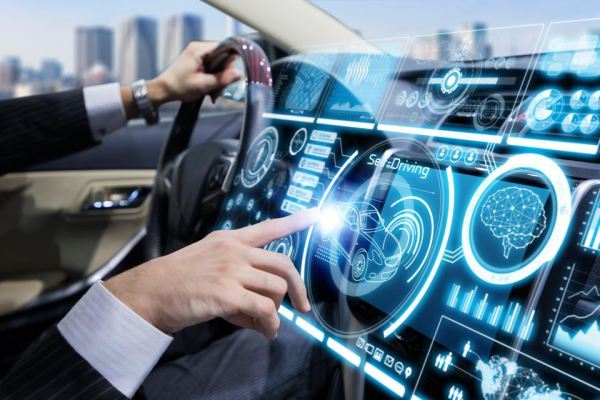Is it inevitable for tech companies to enter the automobile manufacturing market?
- Tram Ho
The automobile manufacturing sector used to be a challenging playground and not every company has the confidence and the potential to venture into it. As the auto industry undergoes major changes, especially the emergence of self-driving cars and emission-free smart electric vehicles, the problem of car manufacturing arises again.

Many big tech companies are starting to step into the car manufacturing industry
But the “protagonists” in the revolution of the automobile industry are now not traditional manufacturers, but are gradually replaced by technology companies. So why has this situation?
Car manufacturing costs are lower and lower
One big change in the environment is that the hardware costs to make cars seem lower and lower.
The cost mentioned here is not simply a matter of funding. In fact, the cost of an electric car is higher than that of a fuel-powered vehicle. For the automotive market in the past, the core component of a fuel-powered car was the engine and powertrain. The cost of the engine and powertrain in a fuel-powered vehicle accounts for about 15 ~ 20%. In a new energy vehicle, the core components that become batteries, the electronic controller and the engine, known as the “power trio”, account for more than 60% of the cost, of which the battery can account for more than 60% of the cost. 40% of the total cost of the vehicle.
Going back to the reason that technology firms entered the car manufacturing market, in the process of converting cars to electrification, the problem that new carmakers need to solve is not only money, but also ” game “with component manufacturers.
On the one hand, the new car-making force is compared to that of traditional automakers. Automotive understanding places more emphasis on intelligence, such as human-computer interaction, intelligent cockpit, so for a unique experience, the required parts are also higher. On the other hand, since new automakers have little or no sales in the early stages, component manufacturers’ development costs are also higher.
Time to create a car
Another environmental change is that car companies have opened their arms to tech companies.
The joint venture Baidu, Geely, Apple is discussing cooperation with many car manufacturers, including Kia … If only using “foundry” to describe these car manufacturers, I fear that it is not entirely correct. body. Because in collaboration between car companies and tech companies, the viable models are imaginative.
This platform is called “SEA Haohan Architecture”, and the first model to be equipped with the SEA platform is the pure electric ZERO concept of the Lynk & Co. brand. In Geely’s official statement, the change represents “an upgrade from a car maker to a smart travel provider”.
As the basic structure of the car, the SEA platform realizes pluggable hardware and upgradeable software. In the words of an industry insider, it’s like a motherboard. Auto companies can define the vehicle on this motherboard according to their needs, including electronic system architecture and vehicle control agency interfaces.
For tech companies, the manpower, the money, and the time it takes to build a car from scratch is too much. The development cycle of the first generation platform is three years. And partnering with auto companies can greatly shorten car manufacturing processes from 4-5 years to 2-3 years, which is attractive enough in terms of time.
The amount of time delivered by the business model
After seeing the opportunity, where did the “sense of urgency” bring to the automobile technology companies?
In the third quarter of 2019, Xiaomi’s decision-makers proposed making cars on the board of directors, arguing that the end of 2019 to early 2020 is the time for Xiaomi to step in. Predictably, the outlook has made tech companies see a huge possibility, and the opening of the window is key to many tech companies coming or coming to an end.
The first is the huge car market. After the phone market hit the ceiling, the new auto industry’s dividends started attracting many tech companies including cell phone makers.
Second, after the “software-defined car” became the consensus of everyone, the imagination brought about by the software became even more appealing. Tesla CEO Elon Musk confirmed this assertion in a recent interview. He said that Tesla will launch an automatic driver registration service (FSD) in the second quarter of 2021.
In addition to NAD (NIO Autonomous Driving) system issued by NIO together with ET7, service registration model is applied on standard hardware and monthly service fee is 24 USD; plus $ 0.35 premium car entertainment package launched by Tesla. The software billing model is built on the established hardware foundation.
It’s not hard to imagine that, like smartphones, premium ride-hailing software could become a big part of future car companies’ profits. This has changed fundamentally from the “one-shot deal” in auto sales in the past.
Some industry insiders have calculated that Tesla’s investment in FSD over the past three years, if Tesla’s FSD subscription rate is 50%, a car’s net profit could be as high as $ 700; if Tesla sells a million cars a year and profits from self-driving software are over $ 700 million.
With the window open, tech companies should have seen the possible achievements of automotive software in the future and lead to significant margins, if they failed to keep pace. , the opportunity will be smaller and smaller.
Source : Genk
